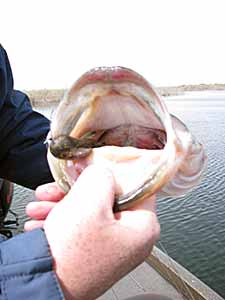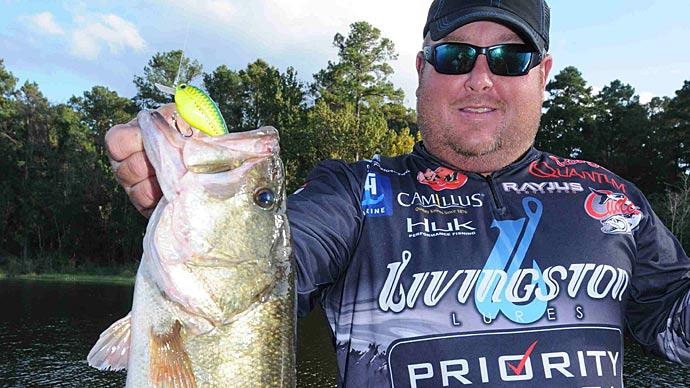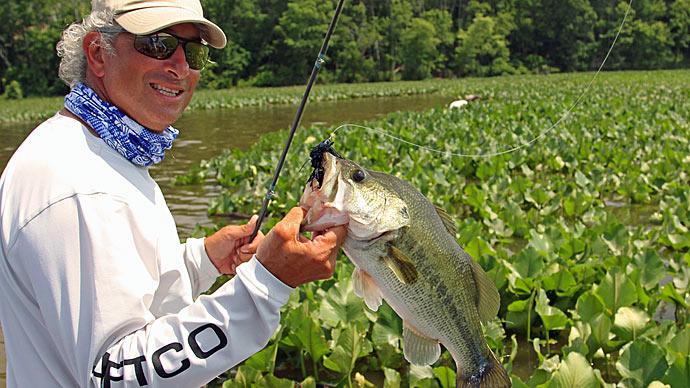
In my fishing career, I have run into many situations nationwide that can be tough for a tournament angler to face.
The strangest situation I have been up against is tidal waters, that most tournament anglers will never face. However, when I fished the BASS pro tour, I ran into this problem several times. The first time was on the Potomac River near Washington, DC.
The Potomac River can look as wild as any wilderness area in the country, or you can fish in downtown Washington DC. You can even watch government helicopters land at the capitol building.
I have also fished tidal waters near the Mississippi River in New Orleans, where several Classic events were held. I'm sure most of you have watched the Classic events on television, but of course, the TV doesn't do justice to the area, and you cannot comprehend how much fishable water there is. There are so many canals, small and big lakes, and rivers that no one could come close to fishing, even a tiny portion of it all.
I fished a tour event on the middle delta near Mobile, Alabama. This fishery wasn't as big as New Orleans, but there was fishable water from the Gulf of Mexico almost to the Tennessee border. All the rivers flowed into the ocean, meaning they all had tides.
The Potomac varied five to seven feet from low to high tide. The New Orleans area moved 18 to 30 inches from low to high, and the Mobile Delta varied close to five feet.
How does an angler from Texas do in these tournaments, having never seen a tidal flow before? Well, he starts slow. On the Potomac, I had a limit every day. It's a pretty good fishery. There are no big largemouth bass, like seven or more pounds, to catch but plenty of smaller ones in the 3- to 4-pound range. The river near Washington even has some smallmouth. In practice, I found some grass beds that held fish even when the tide was falling or low. When the tide was high, the fish could get so far out of range that it wasn't even near where I could take my boat. I also caught a couple of 5-pounders near some boulders on a flat near the river drop-off. These rocks would be in the water on the high tide and almost dry in the low tide.
When the tournaments started, I usually had a high tide, so I decided to start on that rock pile. I made the 20-minute run to my spot, and Mark Pack was sitting in the sweet spot! I should have realized that with the caliber of fishermen competing, someone would find the perfect places - even if they weren't obvious.
Then I had to go to plan B, the grass beds. But I had to wait two hours before the tidal change occurred. I had a small limit that first day, but Mark had five fish that went 20 pounds. So he was the first-day leader. After that, I caught a daily limit but finished in the bottom third of the field in the standings.
The next event for me was in New Orleans. At least the Mississippi is close enough for me to pre-fish. After the Potomac, I knew I had to work harder if I wanted to do better. I fished the area seven days before the two-day cutoff period and hooked up with fellow Texan David Gregg during pre-fish. He helped put me in some good areas. He fished the first Classic held there when Davey Hite won, so he knew the water well. The best thing he did for me was help me with navigation.
David showed me several shortcuts to get to the Bayou Black area. That helped me get into some prime fishing areas. It also helped me save a lot of time, making a difference in the final cut at the scales.
The tide in New Orleans made a difference in my success, but not as much as it did in Washington. The water in New Orleans looks more like it does here in Texas. There's lots of cover, like laydown logs and grass. The only difference was that I might catch a 10-pound redfish instead of a bass. I'd never fished saltwater before, so this took a little getting used to.
The first day I only had three bass and spent a lot of time running around to areas too far apart. I drew a local angler for the second day, which had me going for a while. He was swimming a 6-inch purple with white polka dot worm rigged with three small hooks like you see from the early days of fishing. He caught a limit before I got one bite! I'm not hard-headed, so before too long, he was also dragging some out for me to use. I caught a limit, but it was a small one. But it helped. On the second day of the tournament, I had the third-largest catch of the day. It helped jump me into the top 30.
Tidal water is just another of the many obstacles anglers face. Just remember, whatever the conditions, you must adapt to win. Those who catch on fastest to what's happening are always in the top places. The main thing is to fish hard and not worry about anything else.
Good luck, good fishing, and God Bless.
Bill Wilcox is sponsored by Ranger Boats, Yamaha Outboards, MCMC, BG Products, Pro Rule, Johnson Fiberglass, Brown's Automotive, Continental Batteries, Kistler Rods, Swamp Hog Lures, Strike King Lures, and Fun-n-Sun Sports Center.




